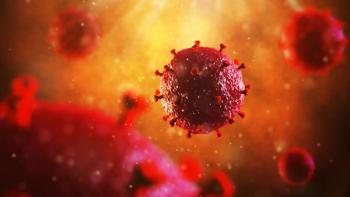
Cardiac Contractility and Kids on HAART
While a few studies have suggested that HAART therapy is generally cardioprotective, the long-term impact of prenatal and postnatal exposure on cardiac structure and function has remained unknown. A new study sheds light.
Cardiac structure and function are improved in HIV-infected children exposed to highly active retroviral therapy (HAART) but contractility declines over time.
This was the key finding in a new study in the Journal of the American College of Cardiology.1 That study, called the HAART-Associated Cardiotoxicity in HIV-Infected Children (CHAART-2), is the first to compare long-term cardiac status in HIV-infected children before and after the HAART era.
“Despite concerns about cardiovascular side effects, exposure to HAART in perinatally HIV-infected children was associated with better measurements of LV structure and function than those of children from the pre-HAART era,” wrote first author Steven Lipschultz, MD, of Wayne State University School of Medicine, Detroit, Michigan, and colleagues.
However, because cardiac function did decline, the results point to the need for evidence-based strategies for monitoring cardiovascular status in children on HAART.
HIV is associated with serious cardiac abnormalities in children, specifically dilated cardiomyopathy, abnormal LV contractility, aortic vasculopathy, and heart failure. However, with the introduction of HAART in the late 1990s, most children with HIV are now on lifelong HAART. Most have also been exposed to antiretroviral therapy (ART) while in utero. While a few studies have suggested that HAART therapy is generally cardioprotective, the long-term impact of prenatal and postnatal exposure on cardiac structure and function has remained unknown.
To evaluate the issue, researchers conducted a prospective multicenter study in which they identified 74 children infected with HIV and exposed to HAART between 2004 and 2007. Then they compared echocardiograms from these children to 860 echocardiograms of children not exposed to HAART. The latter were drawn from the Pulmonary and Cardiac Complications of Vertically Transmitted HIV Infection (P2C2 HIV) study, which took place before the HAART era. The analysis adjusted for differences in age and body size, as well as sex, maternal ethnicity, age at exam, peak CD4 percentage, and most recent viral load.
Key results for HAART-exposed vs HAART-unexposed:
• Any HAART exposure:
o Increased: Mean LV fractional shortening (p = 0.02) and LV contractility (p=0.002)
o Decreased: LV mass (p = 0.01) and end-diastolic septal thickness (p = 0.001)
• Total Length of HAART exposure:
o Increased: Mean LV fractional shortening (p=0.003) and LV contractility (p=0.02)
o Decreased: End systolic dimension (p = 0.05) and heart rate (p = 0.002)
o No association with LV mass and end diastolic septal thickness (p=0.72 and 0.13, respectively)
• Over 11 years, the HAART group had increased LV fractional shortening, decreased LV mass (p=0.0135), decreased LV end-diastolic septal thickness (p<0.001), and decreased LV contractility (p=0.05), compared to no HAART.
The authors pointed out that by the end of 11 years, LV contractility in the HAART group was similar to HAART-unexposed children. “Whether this downward trajectory of LV contractility will continue is unknown. This suggests that HAART therapy may delay by about a decade, but not prevent, the development of HIV-associated cardiomyopathy in this population,” they wrote.
Further research is needed to establish what age routine CV screening should start, and how often CV monitoring should occur in HAART-exposed children. The authors mentioned that the study took place at large clinical centers, and the results may not generalize more broadly.
Key Points
• Study found that cardiac structure and functioning improved on long-term follow-up in children exposed to HAART, compared to children unexposed to HAART
• Over 11 years of followup, LV contractility decreased in the HAART group and was similar to HAART-unexposed children
• Results point to the need for evidence-based strategies for monitoring cardiovascular status in children on HAART.
References:
1. Lipshultz SE, Wilkinson JD, Thompson B, et al. Cardiac Effects of Highly Active Antiretroviral Therapy in Perinatally HIV-Infected Children: The CHAART-2 Study.
Newsletter
Enhance your clinical practice with the Patient Care newsletter, offering the latest evidence-based guidelines, diagnostic insights, and treatment strategies for primary care physicians.
































































































































































































































































































